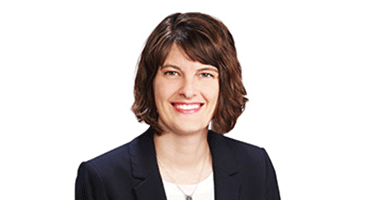The IRS has issued helpful guidance (Notice 2024-12) clarifying prior interim guidance (Notice 2023-63) on the treatment of specified research and experimental (SRE) expenditures under Section 174 and has updated the automatic method change procedures (Rev. Proc. 2024-9) for implementing the rules.
Notice 2024-12 clarifies the treatment of certain research performed under a contract and provides taxpayers with greater flexibility by allowing them to implement only select provisions within the interim guidance. Rev. Proc. 2024-9 provides automatic method change procedures for implementing the guidance in Notice 2023-63, as modified by Notice 2024-12, and includes a new automatic for the treatment of Section 174 expenses allocable to long-term contracts under Section 460.
Background
Notice 2024-12 clarifies and modifies Notice 2023-63 in which the IRS provided proposed interim substantive guidance for complying with the new Section 174 rules. The IRS released Notice 2023-63 in September 2023 to clarify the treatment of SRE expenditures under Section 174, which must be capitalized and amortized under the Tax Cuts and Jobs Act (TCJA). The interim guidance addressed several substantive issues for complying with the new Section 174 rules, including the treatment of research performed under contract, software development, the identification and allocation of SRE expenditures, short tax years, dispositions and the interaction of Section 174 with long-term contracts under Section 460. Taxpayers are not required to implement the guidance provided in the notice but can rely on the interim guidance until forthcoming proposed regulations are issued. See our prior story for a more robust discussion of the interim guidance provided in Notice 2023-63.
Rev. Proc. 2024-9 modifies and amplifies Rev. Proc. 2023-24 by providing procedural guidance for taxpayers to obtain automatic consent to change their methods of accounting to implement the guidance in the Notices. Rev. Proc. 2023-24 was released in June 2023 and provides the updated list of automatic method changes. Section 7.02 of Rev. Proc. 2023-24 provides procedures for obtaining automatic consent to change a method of accounting to comply with the new, required Section 174 method, as amended by the TCJA. Taxpayers making the change in their first taxable year beginning after Dec. 31, 2021, do so by filing a statement with their federal tax return in lieu of filing the Form 3115, Application for Change in Accounting Method. Taxpayers that make the change in a year other than their first taxable year beginning after Dec. 31, 2021, are required to file a Form 3115. See our prior coverage for more information on implementing the new Section 174 rules.
Notice 2024-12
Notice 2024-12 provides helpful clarification regarding the application of Section 174 to taxpayers that are research providers. In accordance with Section 6 of Notice 2023-63, costs incurred by a research provider in performing research activities are SRE expenditures if:
- The research provider bears financial risk (i.e., risk that the research provider may suffer financial loss related to the failure of the research), or
- The research provider has a right to use any resulting SRE product in its trade or business or otherwise exploit any resulting SRE product through sale, lease, or license.
Section 3 of Notice 2024-12 clarifies that costs paid or incurred in the performance of SRE activities by research providers that do not bear financial risk and only obtain an “excluded SRE product right” under the terms of the contract are not SRE expenditures. For this purpose, an excluded SRE product right is a SRE product right that:
- Is separately bargained for (i.e., a right that arose from consideration other than the cost paid or incurred by the research provided to perform SRE activities), or
- Was acquired for the limited purpose of performing SRE activities under the contract or another contract with the research recipient.
Notice 2024-12 provides administrative simplification for taxpayers that wish to rely on the interim guidance in Notice 2023-63. As originally drafted, Notice 2023-63 allowed a taxpayer to optionally rely on the interim guidance, but only if the taxpayer implements all of the rules provided in the notice and applies such rules in a consistent manner. Section 4 of Notice 2024-12 modifies this applicability provision by removing the requirement that taxpayers must rely on all rules of the notice if they wish to rely on any rules of the notice. Importantly, taxpayers must still apply the rules that they choose to implement in a consistent manner.
Grant Thornton Insight:
Due to this modification, taxpayers now have flexibility to rely on only the specific provisions of Notice 2023-63, as modified, that best align with their tax strategy and are no longer required to apply provisions of the notice that may be more challenging to implement, such as certain rules related to the identification and allocation of costs. Considering the added flexibility, taxpayers should carefully review all the interim guidance in Notice 2023-63, as modified, to evaluate if there are specific provisions which they would like to implement.
In addition, Notice 2024-12 provides clarification regarding the obsoletion of Section 5 of Rev. Proc. 2000-50, which for costs incurred prior to the effective date of the TCJA changes to Section 174, allows taxpayers to treat the costs of developing computer software that were not otherwise treated as research or experimental expenditures under former Section 174 as currently deductible expenses or capital expenditures that are amortized over 60 months or 36 months. Notice 2024-12 clarifies that Section 5 of Rev. Proc. 2000-50 continues to apply to amounts paid or incurred in taxable years beginning on or before Dec. 31, 2021, and is only obsolete for amounts paid or incurred in taxable years beginning after Dec. 31, 2021.
Updates to automatic accounting method change procedures
Rev. Proc. 2024-9 provides updated procedures for obtaining automatic consent to change methods of accounting for SRE expenditures paid or incurred in taxable years beginning after Dec. 31, 2021. The updated procedures modify Section 7 of Rev. Proc. 2023-24 to:
- Provide a new automatic method change, (DCN) 270, for taxpayers to rely on the interim guidance provided in Notice 2023-63, as modified by Notice 2024-12, (the Notice)
- Clarify that the automatic method changes include a change from treating an expenditure that does not meet the definition of an SRE expenditure as an SRE expenditure to treating that expenditure under the appropriate provision of the Code.
Grant Thornton Insight:
Taxpayers that do not wish to implement any of the interim guidance provided in the Notice can still change their method to comply with the statutory requirements of Section 174 by filing a method change under DCN 265.
In addition, Rev. Proc. 2024-9 modifies Rev. Proc. 2023-24 to include new Section 19.02, which provides an automatic method change (DCN 271) for taxpayers to change their method of accounting for SRE expenditures allocable to long-term contracts accounted for under Section 460 to rely on the interim guidance provided in Section 8 of Notice 2023-63. Additionally, Rev. Proc. 2024-9 also modifies Section 9 of Rev. Proc. 2023-24 to clarify that a change to comply with Section 5 of Rev. Proc. 2000-50 still applies to costs of developing computer software paid or incurred in any taxable year beginning on or before Dec. 31, 2021.
The new procedures to comply with Section 174 or implement the Notice apply to changes filed on or after Dec. 22, 2023. Like prior guidance, the procedures are different depending on whether the taxpayer is filing for the first implementation year or in a later year.
First-year implementation of Section 174
In general, the new procedures to comply with Section 174 are consistent with prior guidance for taxpayers making the change in their first taxable year beginning after Dec. 31, 2021, and are applicable to changes filed on or after Dec. 22, 2023 (i.e., certain fiscal year taxpayers). The most notable change relates to the information that must be included in the statement in lieu of Form 3115 for taxpayers that change their method to rely on the interim guidance provided in the Notice. Taxpayers implementing the guidance in the Notice must reference the appropriate automatic accounting method change number DCN 270, while taxpayers complying with Section 174 without implementing the Notice must continue to reference DCN 265. In addition, taxpayers implementing the guidance in the Notice must specify in the declaration statement the provisions in the Notice that are being implemented.
Implementation after Year 1
Taxpayers making the change in a year after the first taxable year beginning after Dec. 31, 2021, are still required to file a Form 3115, Application for Change in Accounting Method, to effectuate the change and must reference the appropriate method change number that corresponds to the method change being filed (i.e., DCN 265 or DCN 270). In addition, Rev. Proc. 2024-9 includes several new provisions:
- For the second taxable year beginning after Dec. 31, 2021, there is a temporary waiver of the eligibility rule in Section 5.01(1)(f) of Rev. Proc. 2015-13, which otherwise precludes taxpayers from filing an accounting method change for the same item within a five-taxable year period.
- There is an exception to the general requirement for taxpayers to compute a modified Section 481(a) adjustment that allows taxpayers to optionally implement the change on a cut-off basis if the modified Section 481(a) adjustment is negative (i.e., reduction to taxable income).
- The revenue procedure provides limited audit protection in the second taxable year beginning after Dec. 31, 2021, for taxpayers that made, or attempted to make, a change to comply with Section 174 for the first taxable year beginning after Dec. 31, 2021.
Additional information is required in an attachment to the Form 3115, including a declaration of the reason for which the change is being made and if the change is being made on a cut-off basis or with a modified Section 481(a) adjustment.
Grant Thornton Insight:
Taxpayers that attempted to comply with the new Section 174 rules in their first taxable year beginning after Dec. 31, 2021, will likely find the broad nature of the procedures advantageous as they generally provide an opportunity for taxpayers to revise their Section 174 computations in the second taxable year beginning after Dec. 31, 2021. The procedures also provide taxpayers an opportunity to change their method to rely on selected provisions of the Notice.
Section 460 method change
Under Section 19.02 of Rev. Proc. 2023-24, as modified by Rev. Proc. 2024-9, taxpayers can change their method of accounting under Section 460 so that the costs allocable to a long-term contract accounted for using the percentage of completion method (PCM) include amortization deductions of SRE expenditures, rather than the capitalized amount of such expenditures. For purposes of determining the percentage of contract completion, taxpayers may determine estimated total allocable contract costs (i.e., the denominator of the PCM ratio) in one of the following two ways:
- Include all amortization of SRE expenditures that directly benefit or are incurred by reason of the performance of the long-term contract
- Include only the portion of such amortization expected to be incurred and deducted during the term of the contract.
Grant Thornton Insight:
The procedures allow taxpayers to choose between two alternative methods for computing the denominator of the PCM ratio, the first generally providing for slower recognition of income than the second. Taxpayers should be aware that the IRS has requested comments on how to compute the denominator of the PCM ratio and may provide differing rules in regulations. Additionally, the procedures do not address the appropriate treatment of the SRE expenditures in the look-back calculation.
Other key procedural rules applicable to this change in method of accounting include:
- The change is only applicable to long-term contracts that are accounted for under PCM as of the beginning of the year of change, including long-term contracts entered into before the beginning of the tax year of change.
- Generally, the change only applies to the Section 460 treatment of SRE expenditures paid or incurred in taxable years beginning after Dec. 31, 2021.
- Changes made in the first taxable year beginning after Dec. 31, 2021, are implemented on a cut-off basis.
- Changes made for a later year of change are implemented with a modified Section 481(a) adjustment that takes into account the Section 460 treatment of SRE expenditures paid or incurred in taxable years beginning after Dec. 31, 2021. If the modified Section 481(a) adjustment is negative (i.e., reduction to taxable income), taxpayers have the option to implement the change on a cut-off basis.
- There is a temporary waiver of the five-year eligibility rule in Section 5.01(1)(f) of Rev. Proc. 2015-13 for the first or second taxable year beginning after Dec. 31, 2021.
- Taxpayers do not receive audit protection with respect to the Section 460 treatment of expenditures paid or incurred in taxable years beginning on or before Dec. 31, 2021.
Next steps
Both Notice 2024-12 and Rev. Proc. 2024-9 provide welcome clarity and administrative simplification for taxpayers that wish to rely on the guidance provided in Notice 2023-63, as modified. Fiscal year-end taxpayers that have not yet filed their federal income tax return for the first taxable year beginning after Dec. 31, 2021, should consider the guidance in the Notice and evaluate which (if any) provisions of the Notice they want to implement and follow the requirements for filing the statement in lieu of the Form 3115. Taxpayers that have already filed their tax return for the first taxable year beginning after Dec. 31, 2021, should re-evaluate their existing 2022 computations to determine if filing a Form 3115 for a change in method of accounting for 2023 would be beneficial, particularly if they would like to implement some portion of the Notice.
For more information, contact:
Tax professional standards statement
This content supports Grant Thornton LLP’s marketing of professional services and is not written tax advice directed at the particular facts and circumstances of any person. If you are interested in the topics presented herein, we encourage you to contact us or an independent tax professional to discuss their potential application to your particular situation. Nothing herein shall be construed as imposing a limitation on any person from disclosing the tax treatment or tax structure of any matter addressed herein. To the extent this content may be considered to contain written tax advice, any written advice contained in, forwarded with or attached to this content is not intended by Grant Thornton LLP to be used, and cannot be used, by any person for the purpose of avoiding penalties that may be imposed under the Internal Revenue Code.
The information contained herein is general in nature and is based on authorities that are subject to change. It is not, and should not be construed as, accounting, legal or tax advice provided by Grant Thornton LLP to the reader. This material may not be applicable to, or suitable for, the reader’s specific circumstances or needs and may require consideration of tax and nontax factors not described herein. Contact Grant Thornton LLP or other tax professionals prior to taking any action based upon this information. Changes in tax laws or other factors could affect, on a prospective or retroactive basis, the information contained herein; Grant Thornton LLP assumes no obligation to inform the reader of any such changes. All references to “§,” “Sec.,” or “§” refer to the Internal Revenue Code of 1986, as amended.
Trending topics

No Results Found. Please search again using different keywords and/or filters.












Share with your network
Share